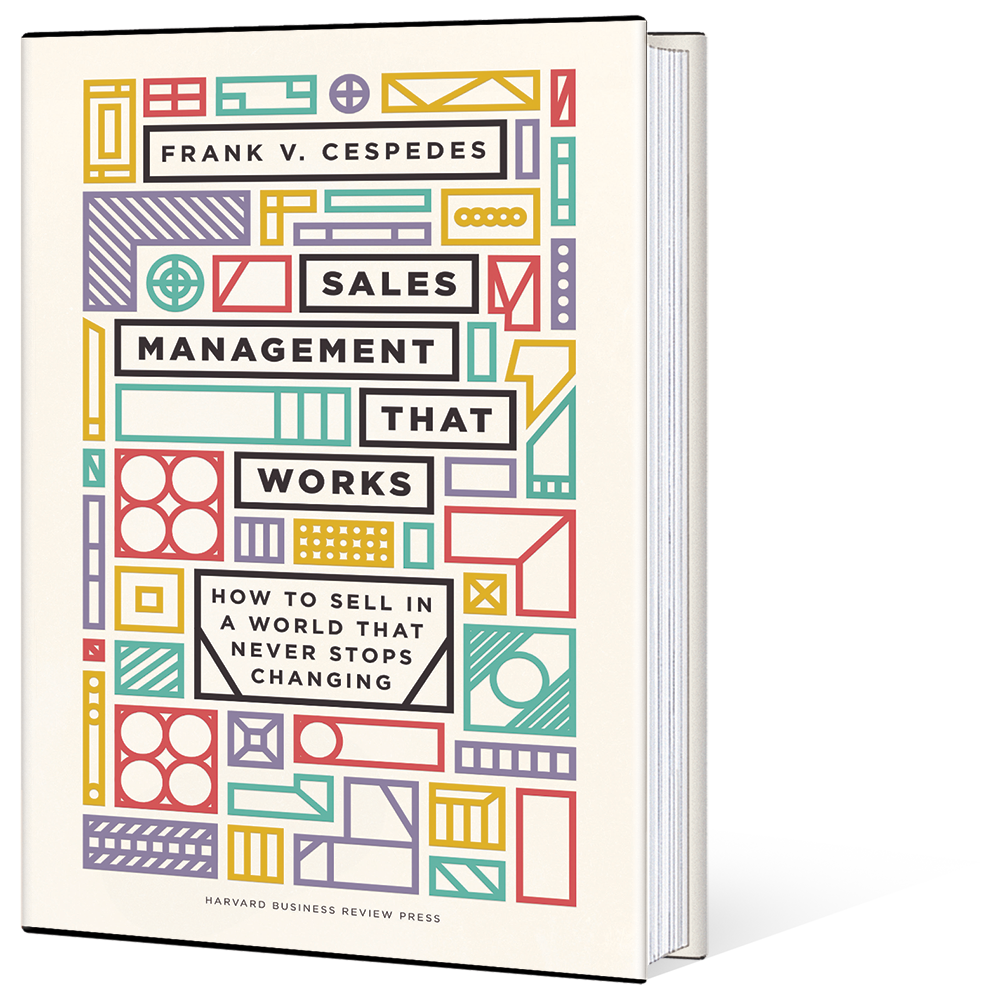Quotable, April 2017
Frank Cespedes, Senior Lecturer at Harvard Business School and author of Aligning Strategy and Sales
Pricing builds or destroys value faster than almost any other business action. Warren Buffet said it well: “The single most important decision in evaluating a business is pricing power…And if you have to have a prayer session before raising the price by 10 percent, then you’ve got a terrible business.”
When you lose a deal, how many times have your salespeople said, “Our price is too high”? Few customers wake up wanting to pay a higher price. But most seek value, and it is the responsibility of the sales team to frame and deliver the value proposition, including price.
Some firms compete successfully on the basis of cost and their ability to make money at low prices. But in any industry there can be only one lowest-cost competitor. Most companies target customers willing to pay higher prices for products that deliver a performance advantage. Here are two core capabilities that sales managers at those companies, and the executives evaluating sales results, must cultivate:
- Determine customer value and costs.
Effective pricing requires understanding the value to the customer versus the firm’s cost to serve customers, and how both vary across segments. In most firms, the best understanding of customer value is held by a combination of people in product, sales, and service. Meanwhile, costs are managed in procurement, operations, and finance. How often in your firm do these people come together to discuss value, costs, and pricing in a disciplined way? Great pricers make that dialogue part of the culture, keeping the information flows current and fact-based.
Consider the example of a company whose business relies on big-project deals. It upgraded its traditional sales “win-loss analysis” to a cross-functional after-action review. One result was more precision about target customers, deployment and staffing of sales calls, and the true causes of wins and losses. As one of the company’s (non-sales) senior executives discovered, “It turns out that high price is what customers tell you even when the truth is that they won’t buy from you for other reasons.”
These meetings can also result in ongoing product and value proposition improvements, as well as an understanding of how value varies across customer types. Information shared via virtual user groups like Marketo’s Marketing Nation, Oracle’s Topliners, or the Salesforce Success Community allows customers to research products, prices, and usage experience before ever speaking with salespeople. When different customers derive different value from the same product (as in many software and data-analytics categories), then one price across these groups almost certainly means that some customers are, in effect, subsidizing others. Sooner or later, competitors or a supply-chain consultant or a good CFO will tell them. Conversely, these differences often only become apparent in account reviews — a core responsibility of sales leaders.
- Link sales incentives to your pricing approach.
Salespeople must be trained and incentivized to support a company’s overall strategy. Pricing that reflects value by customer or segment, while paying the sales force on volume, rarely works. Notice the message when the commission or bonus is linked to sales volume, independent of price, margin, or the cost to serve: Go forth and multiply because any customer willing to pay a certain price (often discounted to make the volume quota target) is a good customer. This approach soon generates an unwieldy array of sales tasks, undermines selling effectiveness, and makes profitable growth increasingly difficult. This is, in fact, the situation at many SaaS companies, and it’s a big impediment to investor expectations.
Consider Fortis (disguised name), which sells a bundled solution of equipment and consumables with presale application support and post-sale technical service. Fortis lost market share and profits after customers started to unbundle that package after the initial purchase. Meanwhile, the sales force continued to be evaluated and compensated on sales volume. Fortis charted the net price paid by each major account (after volume discounts and price exceptions) versus the cost to serve that account. The result was a revealing 2×2 matrix, with customers randomly distributed across all four quadrants.
Chart these variables by account — price paid and cost-to-serve — in your company, and see what you find. If the result is like Fortis, notice the implications. Customers who are low price and high cost will be negative economic-profit customers — a drain on capital — and selling to them is not sustainable even if they generate commissions for salespeople. Conversely, customers who are high price and low cost are profitable — but also vulnerable to competitors who do understand and manage these core selling and pricing variables.
What can sales managers do in this situation? Change incentives to align with pricing realities and follow-up in performance reviews. Effective reviews look at options ranging from pricing to reflect cost-to-serve, shifting support to lower-cost online channels, different ordering or delivery options, or perhaps offloading some activities to resellers who perform certain tasks more efficiently. Too often, however, busy sales managers treat reviews as cursory, drive-by discussions of past performance versus quota, rather than focusing on the development of customer-facing behaviors, including pricing.
The same forces that empower customers also enable sales leaders to get smarter about pricing. Data to track the selling, service, and other costs by account are increasingly available. CRM systems can often supply the relevant data, but are they used? Activity-based costing reports typically uncover dramatic differences in costs and profitability by product, customer, and order, but does sales act on this information in setting goals and managing price exceptions? As usual in business, the important levers are leadership and management, not the technical means.
A price is not the same as pricing. By voting with their feet, customers ultimately determine a market price. But you and your organization have control over pricing where, as Buffet notes, the business impact (up and down) is tremendous.



Trackbacks/Pingbacks